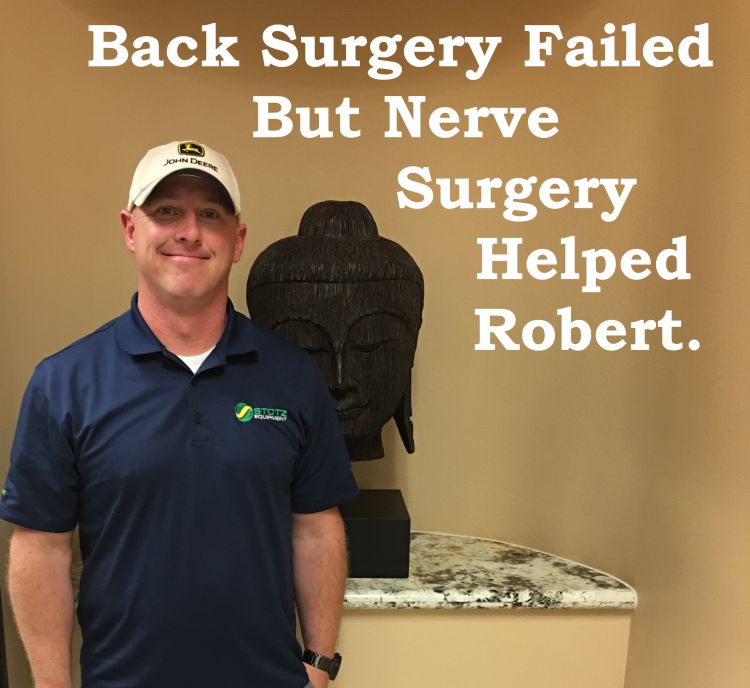Lingering Pain After Back Surgery – What Does It Mean?
Robert Jackson’s story illustrates the problem of failed back surgery and why patients still have pain even after the surgical procedure. In Robert’s case, spine surgery did not help him at all. After the surgery he still had low back and sciatica pain. He agreed to let us share his story in hopes of reaching other patients like him.

Robert did not need spine surgery. After spine surgery he still had pain. But nerve surgery finally gave him relief.*
As a result of a wakeboard accident, Robert Jackson had some nondisplaced vertebral body fractures at L2 and L3. After this injury, he had upper back pain at the site of the fractures as well as low back pain on both sides. Before the wakeboard accident, he was already dealing with right sciatica pain. After he accident, this pain was much worse.
To understand Robert’s case, it is important to note that he had back pain in three places:
- Pain at the site of the injury in his upper back.
- Low back pain as a result pf the wakeboard accident.
- Right sciatica pain which predates the accident.
After about three months, the upper back pain went away because the fractures had completely healed. However, the severe lower back pain and right sciatica pain persisted. Eventually he underwent spine surgery with the assurance from the spine surgeon that it would relieve his low back and sciatica pain. Unfortunately for Robert, spine surgery did not relieve his low back or right sciatica pain.
Enter Dr. Tim Tollestrup whom he met in an unusual way. Dr. Tollestrup operated on Robert’s wife after she suffered a traumatic peripheral nerve injury.
Robert mentioned to Dr. Tollestrup that he had residual back pain after spine surgery. The pain was so bad that Robert was heavily dependent on pain medication to get through the day.
Upon physical examination Dr. Tollestrup diagnosed Robert with piriformis syndrome and superior cluneal nerve compression. Dr. Tollestrup surgically removed his piriformis muscle and decompressed his sciatica nerve. One week post op Jackson shared that his sciatica was pain gone.
Dr. Tollestrup performed a second surgery removing his superior cluneal nerves. Removing the superior cluneal nerves relieved the persistent low back pain.
Thanks to the surgeries by Dr. Tollestrup, Robert is now sleeping 6-7 hours straight at night (formerly he was unable to sleep more than 1-2 hours at a time) and wakes up feeling refreshed. He described his results so far as “life changing.”
However an important distinction must be made about failed back surgery syndrome. Dr. Tollestrup cannot help all patients who have pain after spine surgery. If you have a traditional spine problem, you still need spine surgery.
However, in some instances, like Robert’s case, Dr. Tollestrup’s surgeries can provide relief for patients with pain after spine surgery. If you are unsure of which category you fall in, Dr. Tollestrup can examine you and offer his opinion. His office can be reached at 702-666-0463.
*Disclaimer
We do not guarantee any specific results or outcomes for surgery, should our practice work on your behalf. Information on this website may be used as a reference for successes we’ve achieved for our patients, and not as an assurance or guarantee for similar results in all instances.
